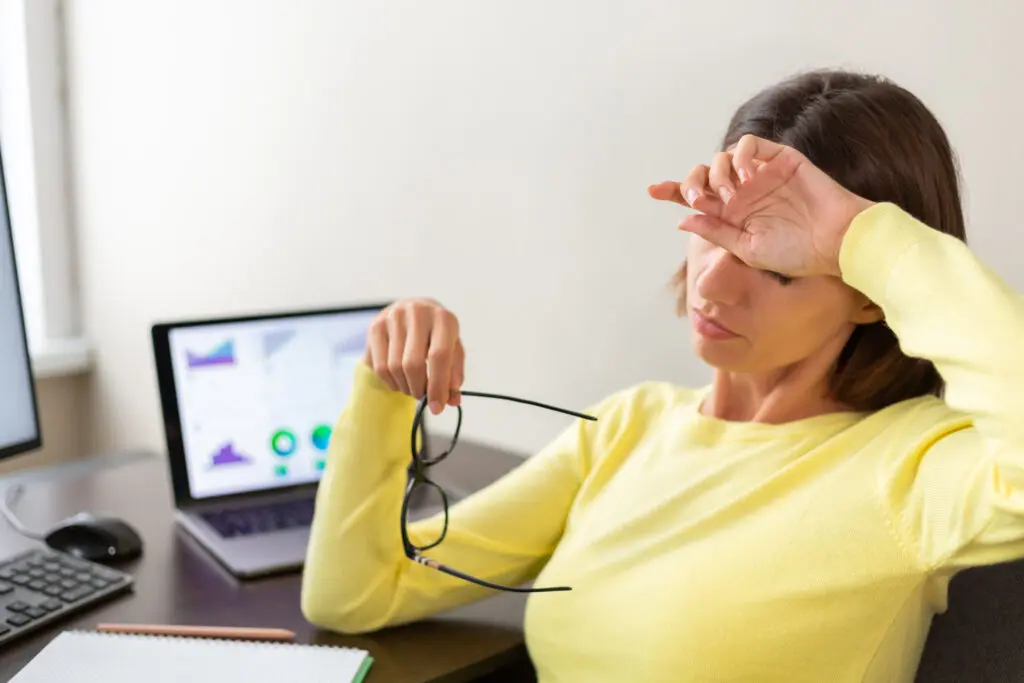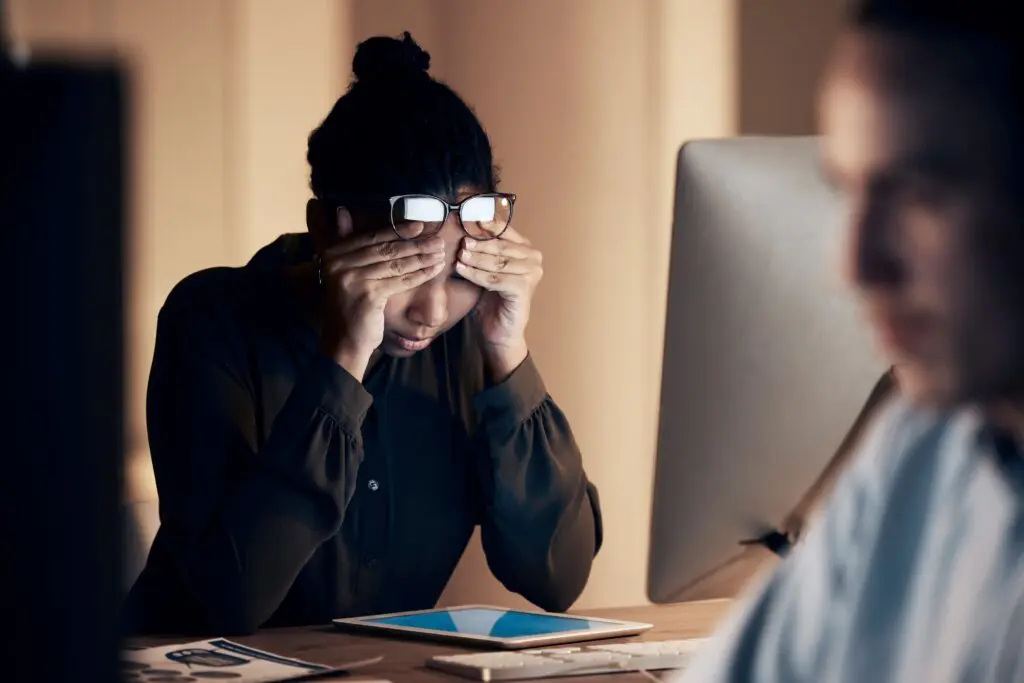In today’s digital age, we spend countless hours in front of screens – whether for work, education, or leisure. However, prolonged screen use can lead to a variety of visual and neurological symptoms, commonly referred to as Computer Vision Syndrome (CVS). One lesser-known but increasingly recognized component of CVS is scrolling sensitivity, a condition where rapid screen motion triggers dizziness, nausea, eye strain, or headaches.
For individuals experiencing scrolling sensitivity, tasks such as reading an article, navigating social media, or working on a computer can become uncomfortable and even debilitating. Fortunately, vision therapy and specialized optical solutions, such as prism glasses, offer effective relief and long-term recovery strategies. In this article, we will explore the causes of scrolling sensitivity, its connection to Computer Vision Syndrome, and how vision therapy and prism lenses can assist in alleviating symptoms.
Understanding Computer Vision Syndrome (CVS) and Its Impact
Computer Vision Syndrome, also known as Digital Eye Strain, is a condition resulting from prolonged screen use. It is characterized by symptoms such as:
- Eye strain and discomfort
- Dry eyes
- Blurred vision
- Headaches
- Neck and shoulder pain
- Light sensitivity
These symptoms arise due to the increased visual demands of digital screens. Unlike printed text, screens emit light, have varying levels of contrast, and require continuous accommodation (focusing) and vergence (eye coordination). When our visual system is overworked without adequate rest or support, discomfort follows.
What is Scrolling Sensitivity?
Scrolling sensitivity is a subset of CVS that occurs when visual motion on screens – such as scrolling through a webpage, swiping on a smartphone, or watching fast-moving content – triggers symptoms such as:
- Dizziness or vertigo
- Nausea
- A sensation of motion sickness
- Eye discomfort
- Headaches or migraines
- A feeling of disorientation or being “off-balance”
This sensitivity occurs because the brain struggles to integrate visual input from the moving screen with vestibular (balance) information. The result is a visual-vestibular mismatch, which can be particularly problematic for individuals with binocular vision dysfunction (BVD), vestibular disorders, or post-concussion syndrome.
The Role of the Visual and Vestibular Systems
To understand scrolling sensitivity, we need to explore how the visual and vestibular systems interact.
- Visual System: The eyes provide constant input about our surroundings, guiding depth perception, focus, and movement tracking.
- Vestibular System: Located in the inner ear, this system helps maintain balance and spatial orientation.
- Visual-Vestibular Integration: Under normal conditions, these two systems work together seamlessly. However, when the brain receives conflicting signals – such as perceiving movement on a screen while the body remains still – it can lead to motion sensitivity.
This mismatch is similar to what happens in motion sickness when traveling in a car or boat, except that with scrolling sensitivity, the trigger is digital rather than physical movement.
How Prism Glasses Can Help
Prism glasses are a valuable tool in addressing scrolling sensitivity, particularly in individuals with binocular vision dysfunction (BVD) or post-concussion visual issues.
What Are Prism Glasses?
Prism lenses subtly alter the way light enters the eyes, reducing strain on the visual system. They work by:
- Aligning visual input for individuals with eye misalignment
- Reducing visual stress by easing the workload of eye muscles
- Improving depth perception and spatial awareness for those with scrolling sensitivity, prism glasses help by stabilizing the visual field, making it easier for the brain to process motion without triggering dizziness or discomfort.

Who Can Benefit from Prism Glasses?
Prism lenses are particularly effective for:
- Individuals with convergence insufficiency (difficulty bringing the eyes together for near work)
- Those with post-concussion vision syndrome
- People with vestibular disorders, such as vestibular migraines
- Anyone experiencing scrolling sensitivity and motion-induced discomfort
While prism glasses provide significant relief, they work best when combined with vision therapy, which addresses the root causes of visual discomfort.
Vision Therapy for Scrolling Sensitivity and CVS
Vision therapy is a structured program designed to improve eye coordination, focusing ability, and visual processing. It is particularly beneficial for individuals struggling with scrolling sensitivity because it strengthens the brain’s ability to integrate visual and vestibular information effectively.
How Vision Therapy Works
Vision therapy involves a series of customized exercises aimed at improving:
- Binocular vision (how both eyes work together)
- Accommodation (focusing ability)
- Eye-tracking (smooth and accurate movements)
- Vestibular-ocular reflex (VOR) (the ability to stabilize vision with head movement)
Exercises That Help
A trained vision therapist may recommend exercises such as:
- Pencil push-ups to improve convergence ability
- Brock string exercises for depth perception and alignment
- Smooth pursuit tracking to enhance eye movement control
- Vestibular-ocular training using gaze stabilization techniques
Regular vision therapy sessions, combined with at-home practice, help individuals adapt to visual motion more efficiently, reducing scrolling sensitivity over time.
Practical Tips for Managing Scrolling Sensitivity
While prism glasses and vision therapy provide long-term solutions, implementing daily habits can also help reduce symptoms.
Screen Adjustments
- Reduce motion effects by turning off smooth scrolling and animations.
- Adjust brightness and contrast to decrease strain.
- Increase text size to minimize excessive eye movement.
Ergonomic Considerations
- Maintain proper screen distance (at least an arm’s length away).
- Use an anti-glare screen to reduce reflections.
- Take regular breaks (20-20-20 rule: every 20 minutes, look at something 20 feet away for 20 seconds).
Lifestyle Modifications
- Stay hydrated to prevent dry eyes.
- Limit screen time before bed to avoid exacerbating symptoms.
- Consider blue light filters or software to minimize digital eye strain.
A Path to Recovery
Scrolling sensitivity can be a frustrating and limiting condition, but understanding its causes and seeking proper treatment can lead to significant improvement. Prism glasses help by stabilizing visual input, while vision therapy trains the brain to process motion more efficiently.
For individuals struggling with Computer Vision Syndrome and scrolling sensitivity, addressing these issues with a comprehensive visual approach is essential. If you or someone you know experiences discomfort while using digital devices, consider consulting an optometrist with a special interest in vision therapy to explore tailored solutions.
By taking proactive steps, you can enhance visual comfort, reduce symptoms, and regain confidence in screen use – improving both productivity and quality of life.
Until next month,
Dr. Paul Rollett, FOVDR






